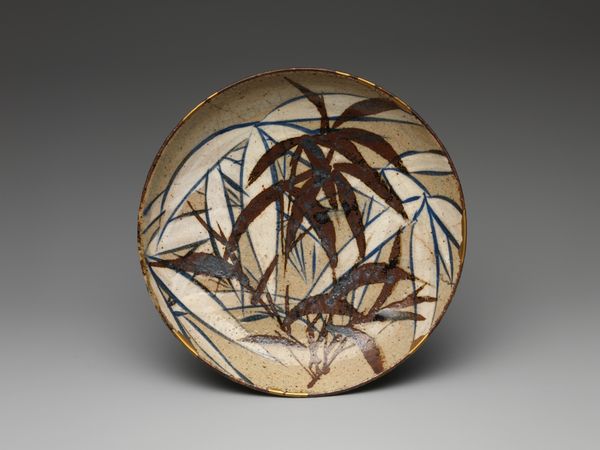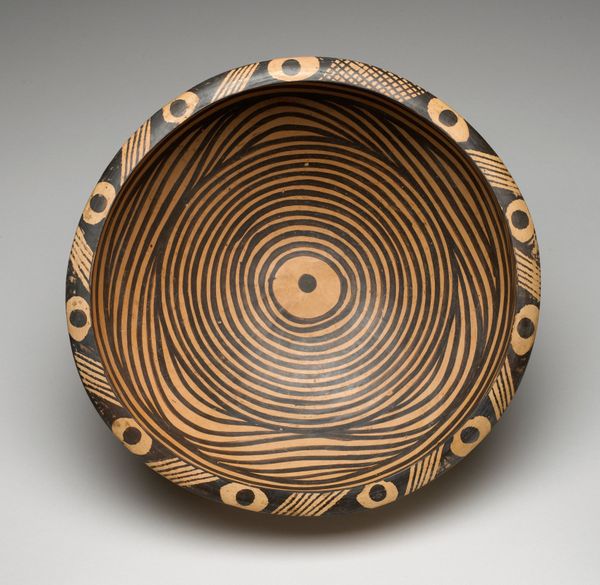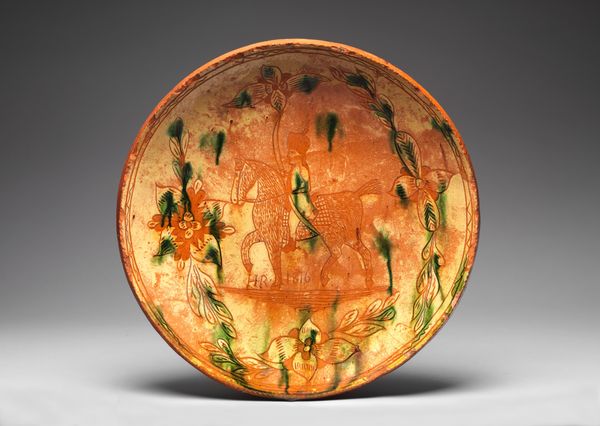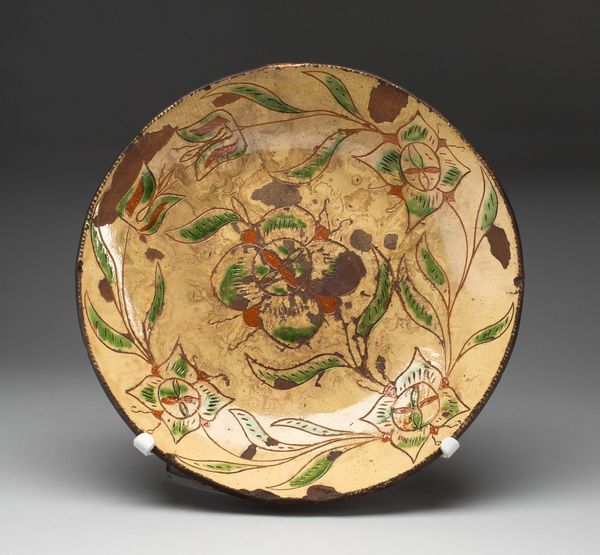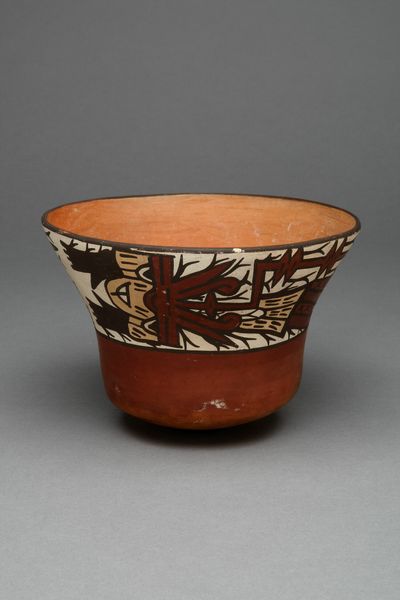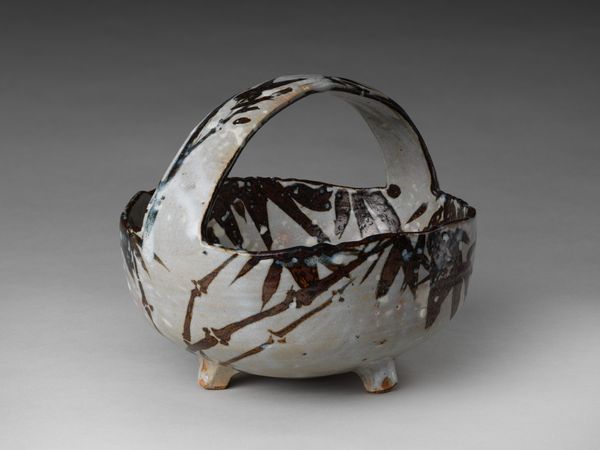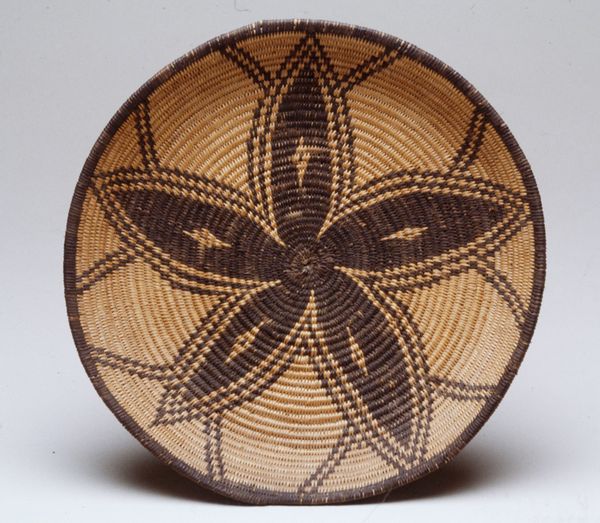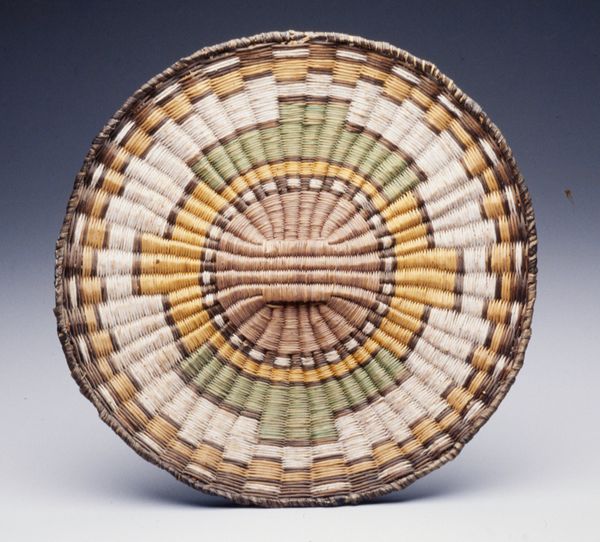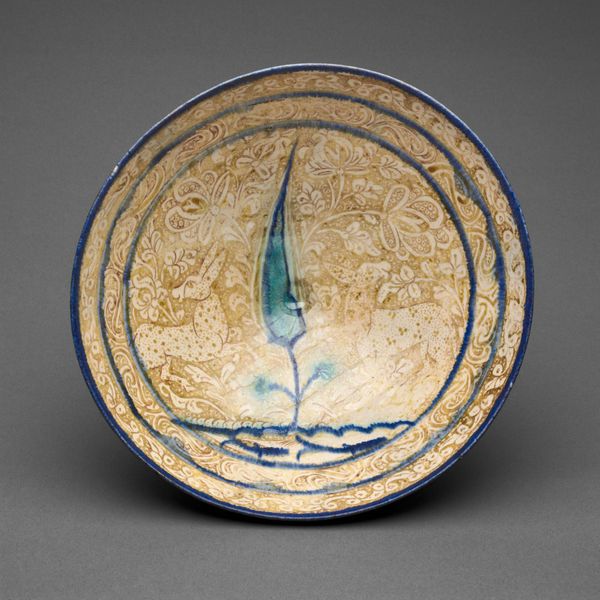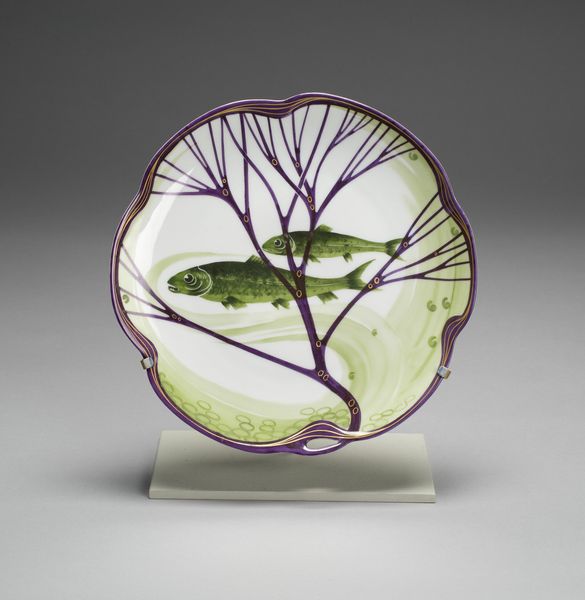
ceramic
#
asian-art
#
ceramic
#
ceramic
Dimensions: H. 1 3/8 in. (3.5 cm); Diam. 6 7/8 in. (17.5 cm)
Copyright: Public Domain
Editor: Here we have an 18th-century ceramic dish with bamboo leaves by Ogata Kenzan, currently held at the Metropolitan Museum of Art. The rough, earthy quality of the ceramic is appealing. What do you make of it? Curator: For me, it’s compelling to consider this object outside the traditional hierarchy of art versus craft. How does its creation—the sourcing of clay, the labor of shaping and firing—intersect with its artistic expression? The depiction of bamboo, so prevalent in East Asian art, here is not merely representational, but materially intertwined with the earth itself. Consider the hands involved, from extraction of materials to the final brushstrokes. What does the making process itself tell us? Editor: So you see it as making a statement about the artistic process? How does it move beyond just being a functional object? Curator: Precisely. This isn't about illusion, it's about revelation. Kenzan, I'd argue, foregrounds the "thing-ness" of the dish. Look closely at how the bamboo leaves are rendered with seemingly effortless brushstrokes; each stroke showcases a mastery born from direct engagement with his materials, underscoring the artist's labour. Consider the social context, the potential consumer of this object. What class did they belong to? Editor: Someone wealthy enough to afford handmade ceramics, I imagine. The detail certainly seems like luxury. Curator: Indeed. This reveals how material culture is inevitably connected to consumption, to a hierarchy that Kenzan simultaneously upholds and questions through his practice. In what ways can handmade artwork serve as both luxury item and mode of cultural expression? Editor: It makes you think about all the effort and skill involved. I never would have considered this dish in terms of labor and class like this. Thank you! Curator: It's about understanding art as something made, not just imagined. Thinking about where objects originate and who benefits really shifts how we approach their meaning.
Comments
No comments
Be the first to comment and join the conversation on the ultimate creative platform.
